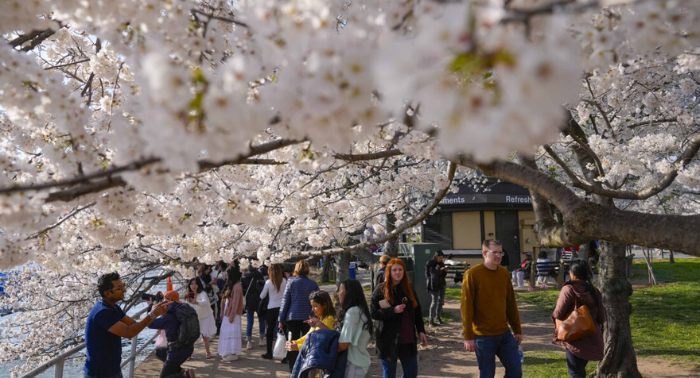As the sun sets on Stumpy, the beloved gnarled cherry tree that has captured hearts on social media, this year’s cherry blossom festivities in Washington mark the bittersweet end for Stumpy and over 100 other cherry trees. These trees will be felled as part of a multiyear restoration project aimed at rejuvenating their Tidal Basin habitat.
Beginning in early summer, work crews will embark on replacing the deteriorating seawall encircling the Tidal Basin, home to the highest concentration of cherry trees surrounding the Jefferson Memorial. The urgent need for restoration arises from the seawall’s decay, compounded by rising sea levels causing periodic inundations of Potomac waters over the barriers.
These frequent floods not only submerge pedestrian pathways but also saturate the roots of cherry trees with brackish Tidal Basin water, imperiling their health. The $133 million undertaking to fortify and rebuild the seawall is anticipated to span three years, according to Mike Litterst, the National Park Service spokesperson for the National Mall.
Litterst emphasizes that while enhancing the visitor experience is paramount, the primary focus is safeguarding the well-being of the cherished cherry trees. He notes the irreversible loss of expansive stretches of trees due to water encroachment, emphasizing the necessity of addressing the root cause before replanting can commence.
Despite its weathered appearance, Stumpy endures.
Plans entail the removal of 140 cherry trees, totaling 300 trees, to be repurposed into mulch. Upon project completion, 277 new cherry trees will be introduced as replacements. The mulch derived from felled trees will shield surviving trees’ roots from harm and decompose into enriching soil, providing a sustainable second life for the retired trees.
The annual National Cherry Blossom Festival, marking the capital’s tourist season kickoff, anticipates a turnout of 1.5 million visitors to witness the blooming spectacle, the highest since the pandemic onset. As the blossoms near their peak, Stumpy’s imminent departure has stirred poignant tributes, including floral offerings, bourbon libations, and even pleas to preserve the tree.
Encouragingly, the National Arboretum plans to preserve Stumpy’s genetic legacy by cloning parts of the tree, ensuring its enduring presence in future plantings at the Tidal Basin.
The ongoing challenges posed by climate change underscore the urgency of conservation efforts. Sea level rise, coupled with warmer temperatures, has disrupted cherry blossom cycles, pushing peak bloom earlier in the year. Despite such climate-induced fluctuations, the tradition of strolling amidst the blossoms remains a cherished experience for visitors and locals alike, symbolizing the enduring beauty of nature amidst changing times.




